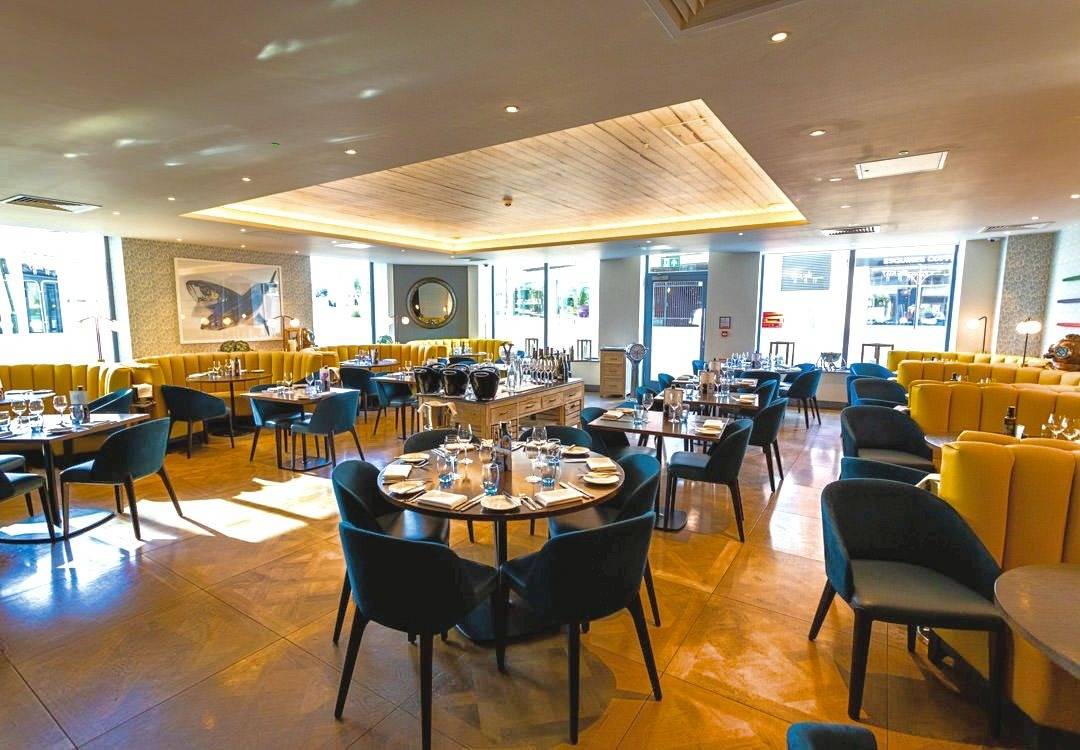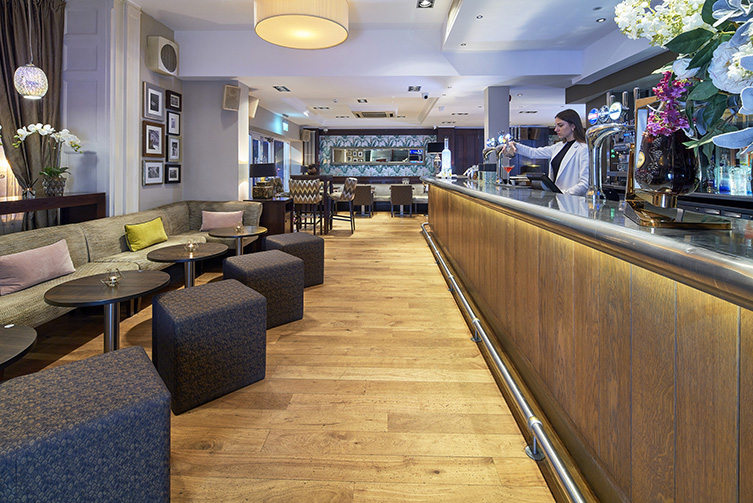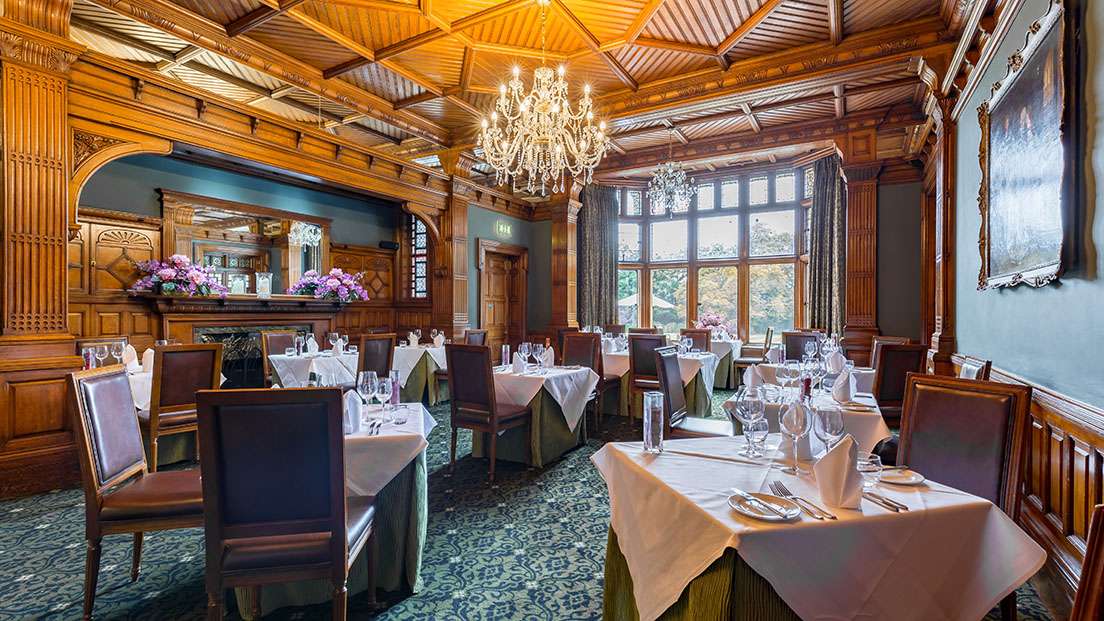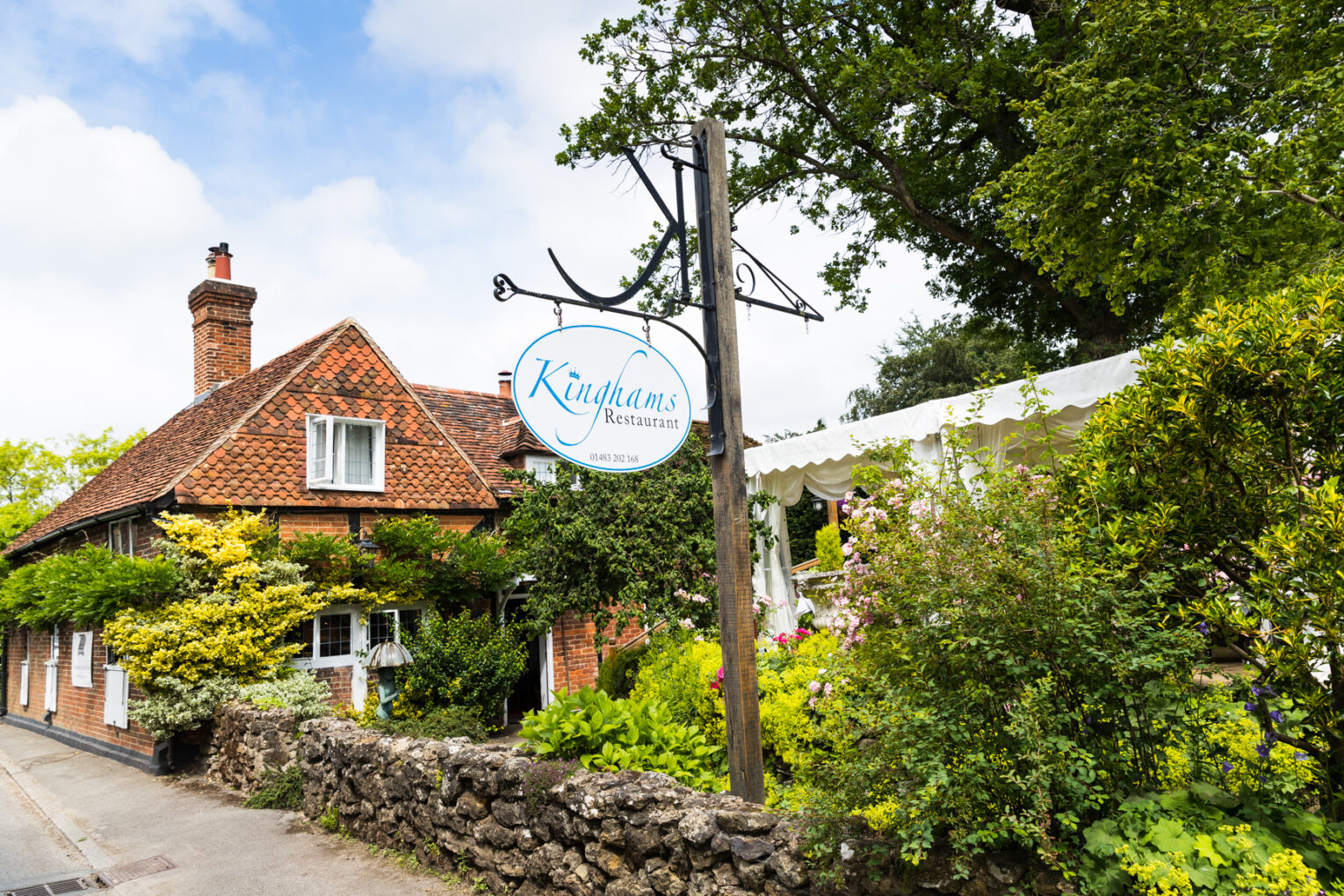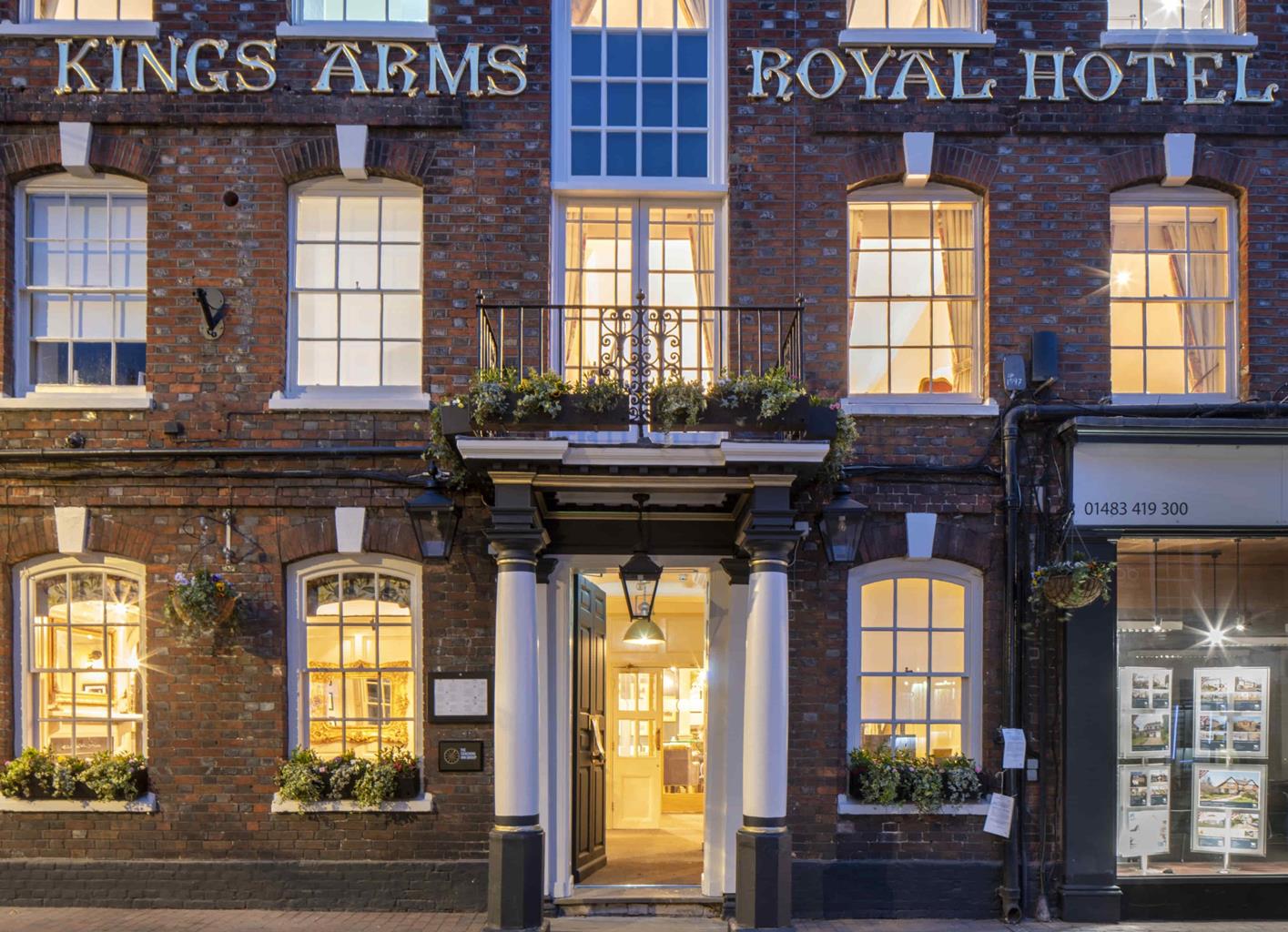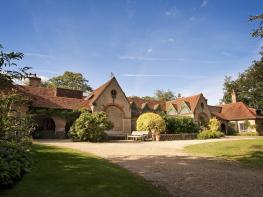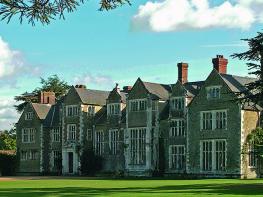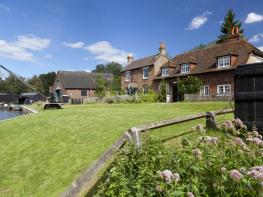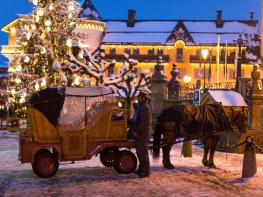The King's Arms & Royal is centrally located in the town of Godalming. This historic…
From Compton to Littleton

The charming countryside bordering Loseley Parl has some surprises in store.
3.9 miles (6.2kms)
About the walk
During the early 1880s, residents around London’s Holland Park might have spotted one of their neighbours hauling an immense statue into his garden on a short length of railway track. The artist and sculptor George Frederic Watts began work on Physical Energy, possibly his greatest masterpiece, while living at his house in Melbury Road. Watts created this larger-than-life statue of a horse and rider purely for himself. He’d already created a plaster miniature and built the full-size version in a mixture of chalk, fibre and glue, supported on a wooden framework. You can see both models at the Watts Gallery in Compton – the finished bronze statue is now in Kensington Gardens, London.
Born in 1817, Watts was a sickly child and was educated at home. He studied briefly at the Royal Academy, but dropped out after only a few weeks. Despite this, he mastered the wide range of styles and techniques that you’ll see at the gallery – social paintings, landscapes, allegorical works and sculptures. Described as the finest portrait painter of his generation, Watts gathered his best portraits into a ‘Hall of Fame’ that included artists, authors, scientists and people in public life, and gave this collection as his gift to the nation – a public record of the most influential Victorians around at a time when photography was still regarded as a passing fashion. As a result, most of these works are now held in the National Portrait Gallery.
In his personal life, too, Watts was a difficult person to classify. He married the charismatic actress Ellen Terry in 1864, when he was 47 and his bride was just 17; the couple separated after only a year. It was over 20 years before Watts re-married, and in 1891 George and Mary Watts moved to Limnerslease, a new house at Compton designed for them by Ernest George. Here, Mary, also an artist, created the Mediterranean-style cemetery chapel, and the couple commissioned the Watts Gallery, the Arts and Crafts building that opened just before George’s death in 1904.
Walk directions
Take the signposted public footpath from the lay-by a few paces from the junction of Withies Lane and Polsted Lane. Head through Bummoor Copse, now much thinned on the left, then follow the enclosed path along the woodland edge until you reach a kissing gate at the end of a concrete farm road. Turn left along the road; then, just as you come to the large buildings at Coneycroft Farm, dodge up to your right and through a waymarked gate. Follow the narrow path out onto Down Lane.
Turn right for 27yds (25m) along the road. Just before the Watts Gallery, turn right again onto the signposted North Downs Way; this is easy walking, on a good track with sand under your feet. The track narrows as you pass farm buildings and begins the climb towards West Warren. At the signpost, stay with the North Downs Way across a bridleway and into the woods. As you approach East Warren, the National Trail zig-zags left and right and joins a farm road. Follow it for another 700yds (640m) until the outskirts of Guildford come into view as the trail swings left at a waymark post.
Turn right; then, after 50yds (46m), keep ahead onto Littleton Lane. Follow it to the red postbox set into the garden wall of Pillarbox Cottage, and immediately turn right onto the signposted public footpath. The path leads you through a kissing gate and then across a couple of fields. There are picnic tables by the lake alongside the third field, and beyond a kissing gate enjoy great views of Loseley House on your left.
Cross a stile and walk over the track to Loseley House to reach a stile and a signpost. Follow the fenced path ahead as it bears round to the left. Continue, to emerge by the entrance to Loseley Park. Turn right and follow the track down a tree-lined avenue all the way through to Little Polsted at the top of Polsted Lane.
Turn left and follow the lane back to the junction at the start of the walk.
Additional information
Sandy tracks and field paths, can be muddy; 2 stiles
Farmed and wooded countryside
Lead required through Coneycroft Farm and near livestock
OS Explorer 145 Guildford & Farnham
Lay-by in Polsted Lane, close to junction with Withies Lane
None on route
WALKING IN SAFETY
Read our tips to look after yourself and the environment when following this walk.
Find out more
Also in the area
About the area
Discover Surrey
Surrey may be better known for its suburbia than its scenery, but the image is unjust. Over a quarter of the county’s landscapes are official Areas of Outstanding Natural Beauty, and along the downs and the greensand ridge you can gaze to distant horizons with hardly a building in sight. This is one of England’s most wooded counties, and has more village greens than any other shire. You’ll find sandy tracks and cottage gardens, folded hillsides and welcoming village inns. There’s variety, too, as the fields and meadows of the east give way to the wooded downs and valleys west of the River Mole.
Of course there are also large built-up areas, mainly within and around the M25; but even here you can still find appealing visits and days out. On the fringe of Greater London you can picnic in Chaldon’s hay meadows, explore the wide open downs at Epsom, or drift idly beside the broad reaches of the stately River Thames. Deep in the Surrey countryside you’ll discover the Romans at Farley Heath, and mingle with the monks at England’s first Cistercian monastery. You’ll see buildings by great architects like Edwin Lutyens and Sir George Gilbert Scott, and meet authors too, from John Donne to Agatha Christie.
Nearby stays
Restaurants and Pubs
Nearby experiences
Recommended things to do
Why choose Rated Trips?
Your trusted guide to rated places across the UK
The best coverage
Discover more than 15,000 professionally rated places to stay, eat and visit from across the UK and Ireland.
Quality assured
Choose a place to stay safe in the knowledge that it has been expertly assessed by trained assessors.
Plan your next trip
Search by location or the type of place you're visiting to find your next ideal holiday experience.
Travel inspiration
Read our articles, city guides and recommended things to do for inspiration. We're here to help you explore the UK.




